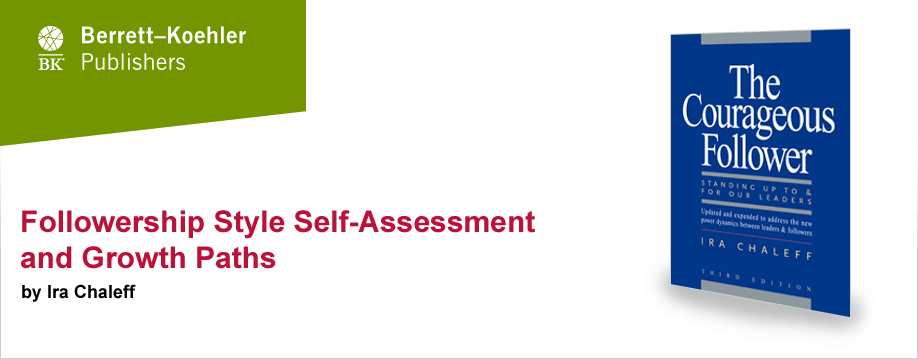Many instruments have been designed to capture and reflect leadership styles. Few exist to serve the same purpose for followership styles. Understandably, then, few individuals have ever thought about their own followership style. It is extraordinarily difficult to reflect on one’s own tendencies and behaviors until one has language with which to examine these characteristics. Yet we need to form some sense about our individual followership style if we are to appraise its usefulness and formulate a direction for growth. This self-assessment will provide you with language about your style and your growth path.
In my workshops, I use a two-axis representation derived from the core of the Courageous Follower model that many participants find helpful in understanding both their strengths and their growth needs. This is the model we will use in this assessment. You may be participating in this assessment in preparation for a workshop or simply to satisfy your own curiosity and desire for improvement.
Two critical dimensions of courageous followership are (a) the degree of support a follower gives a leader and (b) the degree to which the follower is willing to question or challenge the leader’s behavior or policies if these are endangering the organization’s purpose or undermining its values. These two sets of behaviors exist to some degree in tension with one another. The different mixtures of these behaviors produce the character of the relationship a follower has with a specific leader or with leaders in general. This holds true at all levels of followership.
The possible combinations of these two dimensions produce four quadrants that can depict the posture you tend to assume in relation to leaders. Variances occur, of course, depending on the leader to whom you are relating. But if you change quadrants radically based on the leader’s temperament and style, you are ceding too much power to the leader to determine your behavior in your mutual endeavor. It is useful to identify your core tendency or natural position in relationship to authority at this point in your personal development. Then you can chart a growth path for yourself.
Below you will find instructions for thinking about and answering the twenty questions that will help reveal your inclinations and form a picture of your followership style. Please follow these instructions and complete the self- assessment. We will then examine what the resulting picture is telling you and what choices you may wish to consider regarding your style.
My best wishes for strength, courage, and success in your personal development.
Ira Chaleff
